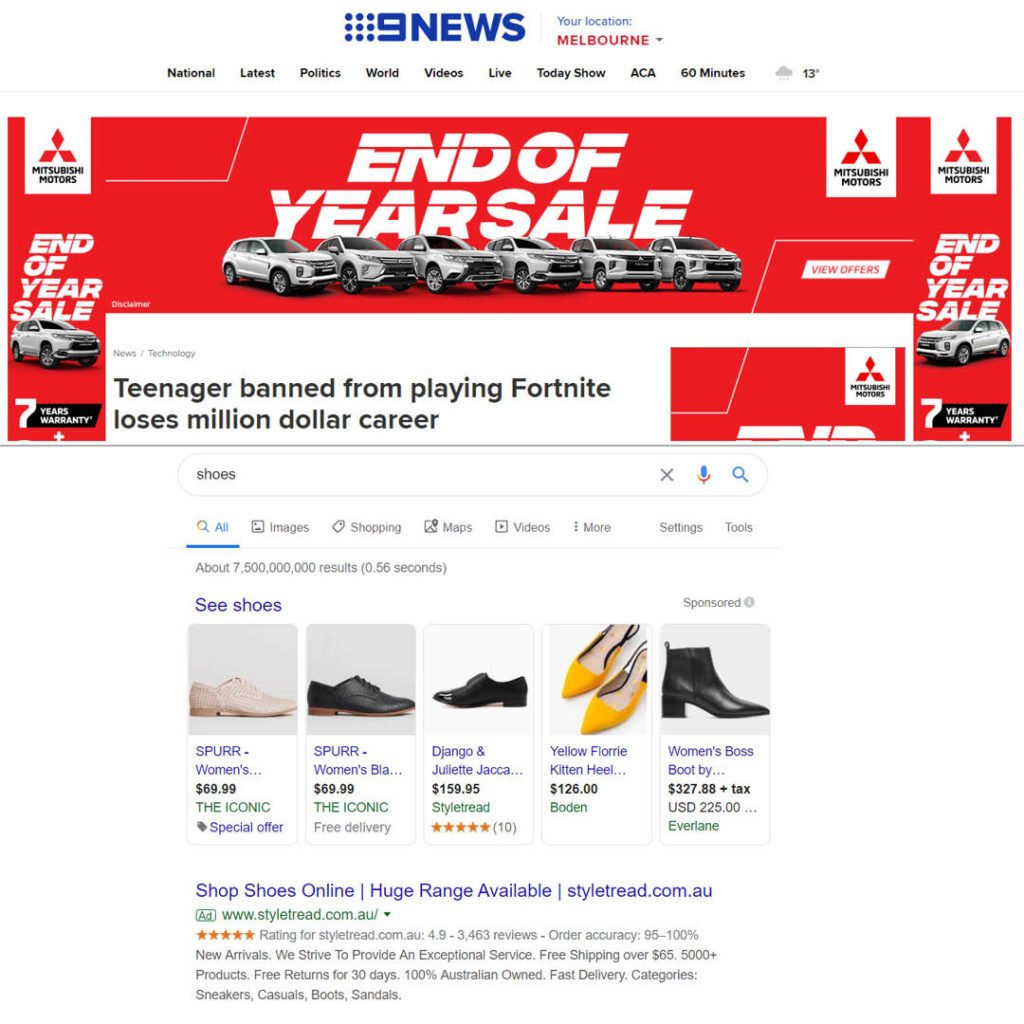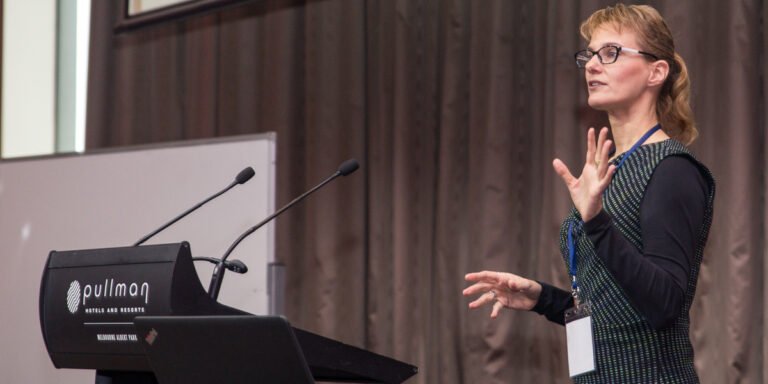Search Engine Marketing (SEM) is when you pay for an ad on Google, Bing, Safari or Microsoft Explorer. SEM is also advertising on other websites through display banners.
Examples of Search Engine Marketing – Display Advertising and Google (SEM)
SEM also covers Facebook and Instagram Advertising.
SEM is also known as:
- Pay Per Click (PPC)
- Paid Search Ads
- Paid Advertising Online
SEM shouldn’t be confused with SEO (Search Engine Optimisation). SEO is about unpaid keywords to help your audience find you on Google.
Simply – SEM has a budget for media spend. SEO is organic and unpaid. SEM and SEO may have administration costs associated if you choose to use an agency.
How can a business benefit from SEM?
Businesses can benefit in at least 5 different ways:
Instant brand awareness on search engines
SEM can place you on the first page of Google. This can be up the top or down the bottom of the Google Search page.
This is great news, while you are waiting for your SEO to be recognised by Google (this process can take up to 6 months to a year!).
So new businesses, with new websites, can gain immediate brand awareness and sales from their intended audience.
Using SEM as part of your strategy can create a huge impact on your revenue.
Sell Quickly
With SEM as part of your marketing strategy, you can gain quick wins on the same day.
Scale your business
It’s easy to start with a small budget. Test things out. See what works.
You can change the message, your audience, your budget or the offer on your ad immediately.
You can stop your ad immediately or increase your daily ad spend if you are seeing results.
Reaches your target market at the right time and place
If your audience is searching for a term relating to what you offer, this is considered a warm audience. They are in research mode and have a strong intent on buying.
72% of consumers who perform a local visit search online, visit a store within 8km of their current location.
So no matter what your product or service is, your target market’s journey usually begins online.
That click may not result in an immediate sale. Yet, it’s a touch point that furthers your target market’s journey towards becoming a paying customer.
Constant reminder your business is present
They may not have made a purchase… yet.
Being on their radar helps your business be front-of-mind.
Since it can take up to 12 touch points (ie: 12 separate sightings of your brand) for a person to buy.
The touch points can depend on the product or service you are selling. For example, car dealerships have an average of 24 touch points with 19 of them being digital.
Presenting your brand consistently and repeatedly can turn your target market into a paying customer.




